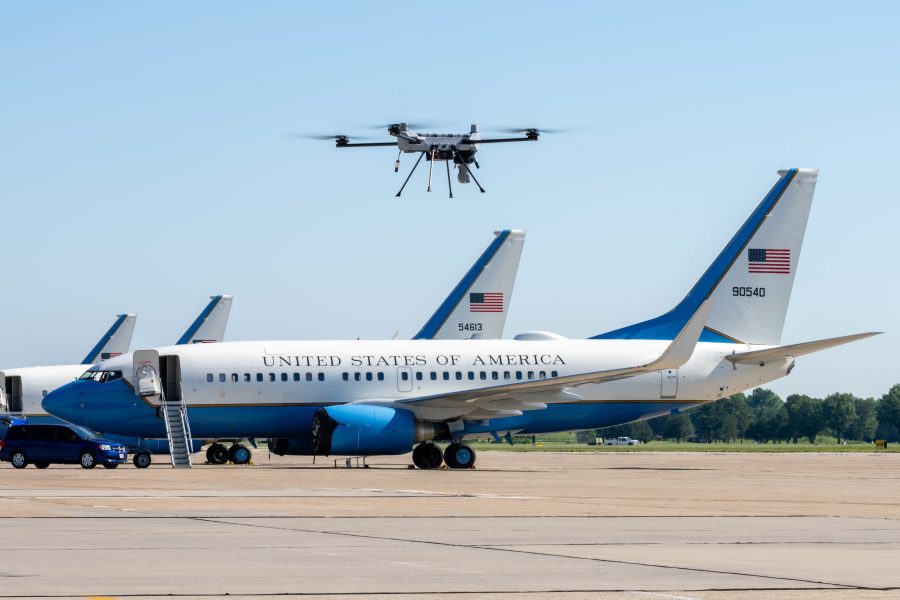The proliferation of drones in the war in Ukraine has changed how many experts see the future of warfare. But the Air Force’s top general is cautioning against overstating those lessons as the U.S. seeks to deter China and Russia and prepare for other major threats.
“I think the appearance of drones and the appearance of rapidly replicable, low-cost, mass airborne platforms offers both a threat and an opportunity,” Air Force Chief of Staff Gen. David W. Allvin said Oct. 25 at the Military Reporters and Editors Conference in Washington, D.C.
There is no question that drones provide the military with a way to strike targets with precision in a cost-effective way. That offers the opportunity, Allvin said, “to deliver combat airpower, sensing, communications in a different way.”
But what works well in Ukraine, he added, may have less utility in the western Pacific as the U.S. seeks to counter China’s growing military.
“The question that we need to address as we look at how it might impact and find its way into our Air Force writ large is the utility across the geography,” Allvin added. “I would not want us to take what’s going on in Ukraine and … transport that immediately to the Indo-Pacific because of the nature of the tyranny of distance.”
Pentagon officials have noted the utility of drones for both Russian and Ukrainian forces. Russia has used Iranian-made drones to attack Ukraine’s energy infrastructure. Russian forces have also employed small quadcopter-style and first-person view drones for reconnaissance and aerial strikes.
Ukraine, in turn, has developed long-range drones that can strike targets in Russia from over 400 kilometers away, Secretary of Defense Lloyd J. Austin III said last week.
DOD recently gave Ukraine’s drone industry $800 million to keep working on long-range aircraft. And drone technology has utility for the U.S. as well, as the Air Force pursues its future force design.
“Those three words don’t often belong in the same text: inexpensive, precise, and long-range,” said Allvin. “But we’re looking at it from both that opportunity and threat perspective on how we might integrate those into the force.”
Still, many of the cutting-edge systems the Air Force is pursuing for great power competition are more sophisticated and costly than the UAVs that have proliferated in Ukraine’s airspace.
The Air Force is betting big on Collaborative Combat Aircraft (CCA), envisioned as wingman drones that cost $25 million each and fly alongside the service’s manned fighters and bombers. The first series of designs has been unveiled, and Allvin said 150 CCAs will be in service within the next five years. The capability and mass that could be provided by those platforms have led the service to reevaluate its future manned fighter needs.
“Collaborative Combat Aircraft, I don’t want people to think of those as a quadcopter-style drone,” said Allvin. “They are certainly of a different class, and the idea is for them to be autonomous and collaborative with current systems.”
Yet another challenge is figuring out how to counter cheap drones that are used by adversaries. In the past year, U.S. troops in the Middle East have been targeted by Iranian-backed groups armed with one-way drone attack drones, including one drone strike that killed three Soldiers in Jordan in February.
Iran has also deployed one-way attack drones against Israel, which Air Force F-15E and F-16 fighters helped shoot down in April, and Iranian-backed Houthis have attacked shipping in the Red Sea, Gulf Aden, and Bab el-Mandeb strait in part with one-way attack drones by air and sea.
“The counter small-UAS threat is something that is certainly growing at a concerning pace,” Allvin said. “The barrier entry to that is low, the ability to attribute [the attack] is low. … We plan on really working on that and developing the counter small UAS to be able to counter the threats, not only here, but also the ones that we are facing overseas.”
